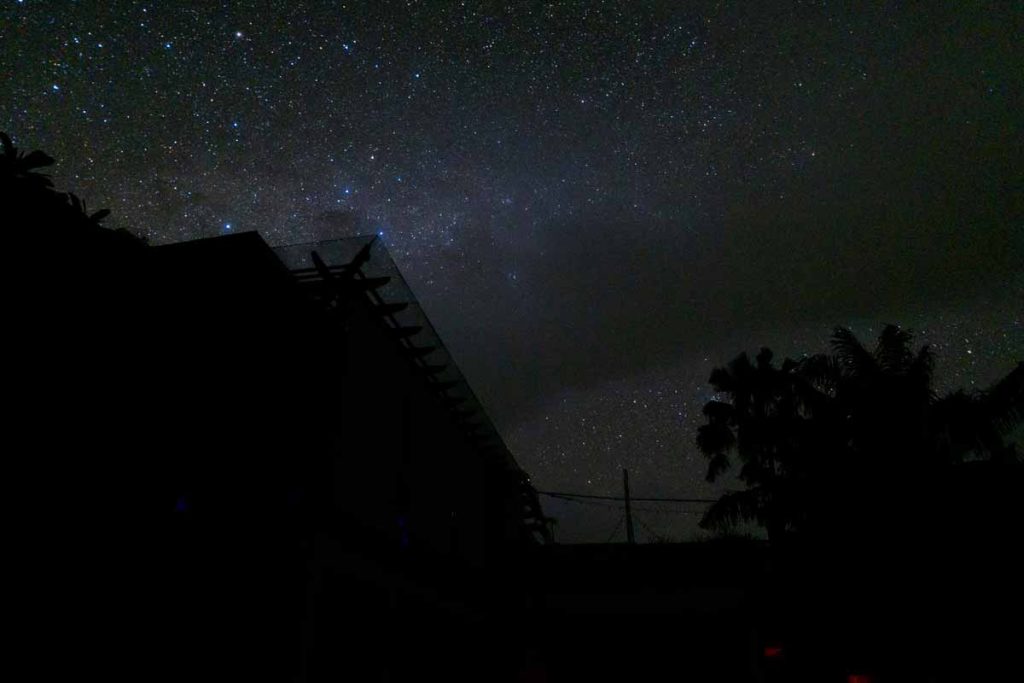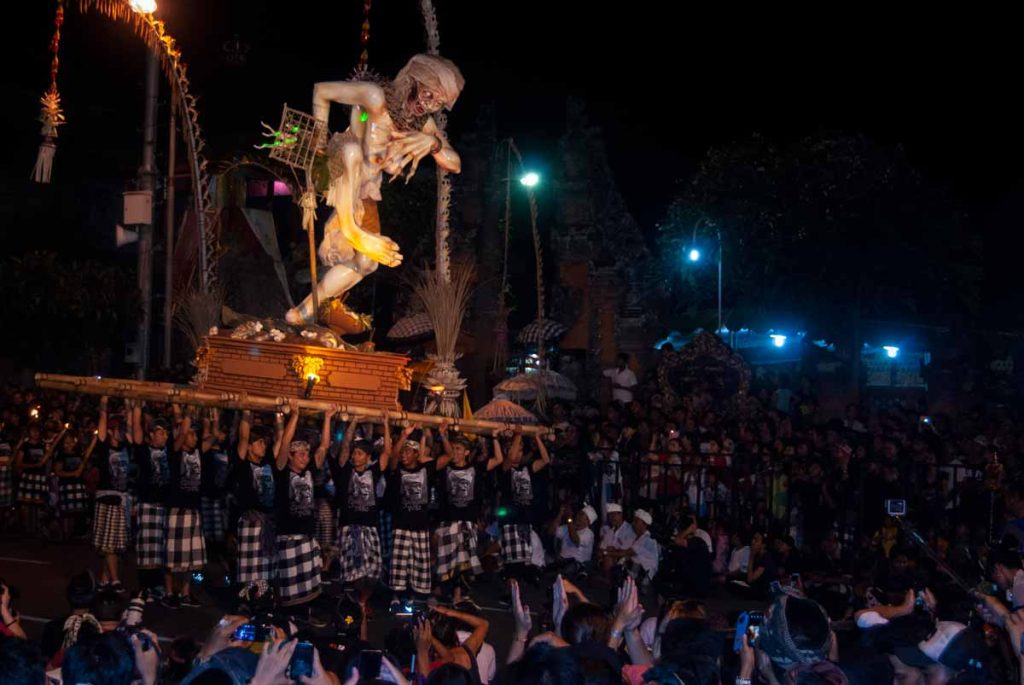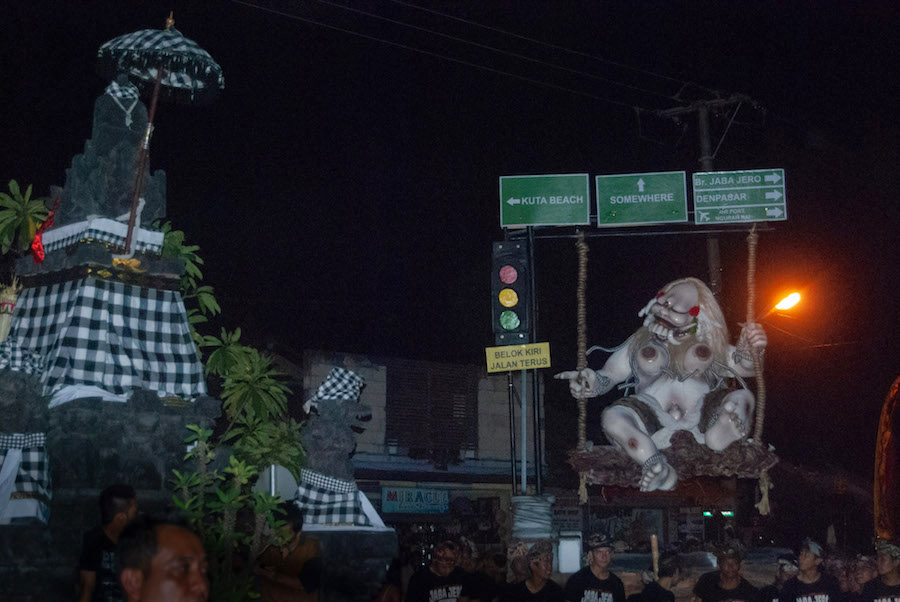Journalist Eric Buvelot and socio-ethnologist Jean Couteau have recorded 20 hours of discussion about changes that have happened in Bali since the 70’s. The conversation was structured and segmented according to many different aspects of Balinese life, mostly from a socio-historical perspective, to trace all the overturning in Balinese mores since 50 years, when modernity started to shape new behaviours.
At the core of these changes, the birth of individuality in a communal society and the revolution it implies. The resulting changes have been more significant in 50 years than the ones happening during the previous millennium.
A 16-chapter discussion book was published in 2021 in France by Editions GOPE (Bali, 50 ans de changements – Entretiens avec Jean Couteau) with the purpose of measuring to which extent Bali has morphed in so little time, a work never done before, encompassing all Balinese social matters. The English version (Bali, 50 Years of Changes – A Conversation with Jean Couteau) has been published, with a translation made by renowned Bali-based American writer Diana Darling and published by Interactive Publications Pty Ltd (Australia).
This month, we take a look with them at how the Balinese have modified their rites or even adopted new ones in recent times – particularly how Nyepi and the Ogoh-Ogoh rituals have evolved.

Eric Buvelot — We have mentioned before the fact that previously there existed several types of Nyepi. There is also history, right? Which goes back a long way. I know for example that the era of this calendar, the Saka era, is of Indian origin and is still used in India.
Jean Couteau — Yes, no doubt about it. Nyepi has totally transformed. In the past, let’s say until the end of the 1970s, what mattered were the processions to the sea to purify the effigies and sacred objects, which took place a few days before Nyepi. But above all, the day before, there was a great purification ritual at noon at the central crossroads of each village. Three priests officiated, one for each level of the world — heavenly, human and chthonian (underworld). To finish up, they purified the world of demons with offerings and mantras. The next day was the day of silence, actually not very quiet. People could go for a walk, visit friends, ride a bicycle. It was fun.
EB. – That’s no longer the case now. There is still the ritual, but impossible to go out. And no light at night. The pecalang are on patrol. And in recent years, no TV, radio, internet. Why all these changes?
JC. – The ‘70s and ‘80s were key years. Why? Because universities had begun to produce intellectuals in numbers. The Bali Post seethed with comments on religion (to strengthen!) and tourism (to develop!). What could be better than to reinforce these opinions with some well-struck formula from an obscure treatise in Old Javanese? This gives an aura of the sacred. The chosen formula was perfect: on the day of silence, you must “kill all fire, kill all work, kill any going out, and kill all pleasure.” Such was the declaration about Nyepi, notably in a vocabulary of combat. So, on the day of Nyepi, no electricity, no work, no riding around, and no making love. Excellent! This formula immediately flourished in the Bali Post, the schools, and especially among the heads of department of the regional administration. People had to take silence seriously. The texts required it. It was only one step for the “conscience” of one’s religious obligation to be transformed into official directives. The line was soon crossed. Before long, the compulsory silence of Nyepi day became a reality.
EB. — Fascinating to see how the text imposes its law because it is text. We thus see religion becoming frozen in time…
JC. — Yes, but that’s not all — because it was when foreigners were living it up in Kuta, often with a marijuana cigarette in their lips. It was also when sweat merchants imported workers by thousands for the construction sites of Nusa Dua. And they were not alone. Following them like shadows were the beautiful and the less beautiful, young widows or too-soon deflowered, who filled the brothels in tents on the building sites of the tourist paradise to come. Not to mention those from the seaside of Kedonganan. Meanwhile, in Denpasar, things were also changing: the city’s Muslim kampongs saw the arrival of soup and noodle merchants in ever greater numbers. And the mosques of the city came out with ever more stringent injunctions to respect the pillars of Islam and to be wary of the scent of pork. Bali was taking in ever more Javanese, some of them beggars, others graduates. All this changed people’s mentalities.
EB. — It’s the identity crystallisation you have told us about?
JC. — Yes, but here we see it around religion. On the one hand there were academics and senior officials, often from Java, imbued with Quranic verses; on the other hand were foreigners propped up with artificial paradises in their heads and ever less formal faith. And then the Balinese — not the intellectuals, but ordinary Balinese — discovered what they had so far refused to recognise: otherness. The incredulity of the one who doubts and the contempt of the one who believes.
EB.— So, according to you, crystallisation happened that way. Don’t you exaggerate a little bit?
JC.— Barely. A sneer here, a call to prayer there, when the Balinese rediscovered “their” Nyepi, it awoke many things in them. It strengthened the idea, from one year to the next, that the silence had to be enforced throughout Nyepi, that is, from sunrise to sunrise. In ten or fifteen years, what was only a vague and easy-going convention became an increasingly hard injunction. Now, beware those who transgress! The pecalang are watching. But that’s not all…

EB.— That’s not all? Yes, you haven’t yet talked about the ogoh-ogoh!
JC.— Indeed, and that’s where the bizarre becomes even more bizarre. Because at the same time as the Day of Nyepi became more serious, the evening before became wild — the ngrupuk parade. In the past, nothing really happened, or almost nothing, after the village crossroads purification ceremony at mid-day. Just a few mantras and offerings, to see off the last demons, the buta, and to start the year in the total purity of Nyepi.
EB.— You’re going to tell me that there were no ogoh-ogoh …
JC.— Exactly. The thousands of monsters on parade, everywhere throughout the island, coming out of each banjar, from every neighbourhood; all sorts — witches on motorbikes, viruses, singers with guitars, each one more extraordinary than the next. Do you think this is traditional? No. It’s a part of modernity. The demons have always existed, the famous buta of shadow theatre and traditional painting. But they are now reimagined in giant form as ogoh-ogoh, on the eve of Nyepi.
EB.— It’s crazy. So, everything changed dimension. From a simple tradition of quiet, Nyepi became the day of silence. And the day before, which was about the invisible buta, became the extraordinary parade of ogoh-ogoh. What happened?
JC.— It started in a banal way, at the beginning of the 1980s, in Denpasar. At the time, the same intellectuals who had investigated the new truth of their religion in old texts in Kawi, or in recently translated holy books of India, these same intellectuals were engaged in debates on tourism, culture, and tradition. Everything but politics, of course, since 1965–1966 was not far in the past. But as Nyepi became serious, the demons exorcised the day before had to become more serious as well. Why not, instead of small symbolic figurines of cooked rice as before, make giant demonic characters to be let free in the streets? Tourists require exoticism — and with this sort of entertainment, they would more easily accept the confinement of Nyepi. The idea was soon in the air. It’s difficult to know who made the initial attempt: a group of young people, no doubt. But it was when the Bali Post got involved, with its star chronicler Gusti Ngurah Oka Suparta, that ogoh-ogoh appeared everywhere within two or three years. Thus, a relatively minor holy day, Nyepi, has in a few years become one of the strongest symbols of the Balinese tradition. And it was made the one national Hindu holiday.
EB.— You are here saying that one has, consciously and unconsciously, created tradition …
JC.— Yes, and it’s not the only case. Siwa Ratri, the “Night of Shiva”, is even more patent. It is the holy day during the darkest night of the year, which usually falls in January.
— I have never heard of this holiday.
— It’s not surprising, because it’s relatively recent. In the past, no one meditated during that night, apart from a few Brahmin lovers of the old Kawi literature. Now, Balinese high school students are supposed to meditate all night addressing their thoughts to Shiva, or at least reading the referent Shivaite text: the story of Lubdhaka the hunter — in which the hero, threatened by a tiger, takes refuge on the branches of a bila tree overhanging a pond. To keep himself awake and thus from falling, he picks the leaves and drops them into the pond, where there is a lingga, the symbol of Shiva, hidden underwater. Because he has unwittingly performed a Shivaite ritual, he achieves moksa (ultimate enlightenment).

EB. — Why Shiva?
JC. — Because Shiva is the supreme God, from a Shivaite perspective. It’s a more classic name than Sang Hyang Widi. But there is another reason. The Night of Shiva was largely reinvented by Ida Bagus Agastia, a fine connoisseur of Kawi, an academic, and a Brahmin as well. So, an influential and respected man. He already knew the Siwaratri Kalpa, the text of the story I just recounted. He started discussing it at the university with colleagues, then in a few articles. Finally, in 1986, with a few peers from Dwijendra University, they spent their first Night of Shiva reading and discussing the text and the meaning of the divine as they thought it should be, Balinese style.
EB.— Very interesting. Siwa Ratri is therefore a historical resurgence, reinterpreted in the light of modernity …
JC.— Yes, if you will, but it is even more complicated, because until the 1980s, before intellectuals rose in number as a result of education, classical texts were taboo. Only Brahmins or sisia who had gone through an initiation had access to them. Now a Brahmin was publicly promoting and interpreting in a manifestly deistic and open manner a classic Kawi text, until then more or less reserved for Brahmins. This was new. In a Balinese religious practice still clearly focused on ancestor worship, here was a Brahmin insisting on a local version of God, which he made accessible to everyone, instead of wanting to keep it for only Brahmans and initiates.
EB.— So it was piety, the religious, that was in mutation?
JC.— Yes, access to university gives its graduates a new legitimacy, which allows them to break free from the shackles and taboos of the puri and gria (princely and Brahmanic houses) tradition. This inevitably results in new interpretations of classical texts and treatises, such as the Sarasamuscaya, scrubbed of misogynist excesses. Besides these resurgences of past texts, there was the introduction of Indian Hindu texts translated from English, and, increasingly, sermons of graduates from India, all of which shakes things to the depths. Not only the religious understanding of ordinary Balinese, but of the Balinese as a whole.






